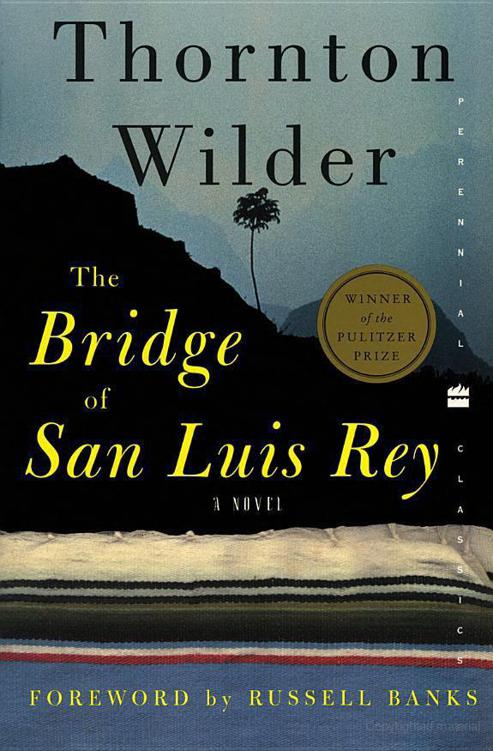
The Bridge of San Luis Rey PDF
Preview The Bridge of San Luis Rey
"On Friday noon, July the twentieth, 1714, the finest bridge in all Peru broke and precipitated five travelers into the gulf below." With this celebrated sentence, Thornton Wilder begins The Bridge of San Luis Rey, one of the towering achievements in American fiction and a novel read throughout the world.
By chance, a monk witnesses the tragedy. Brother Juniper seeks to prove that it was divine intervention rather than chance that led to the deaths of those who perished in the tragedy. His study leads to his own death -- and to the author's timeless investigation into the nature of love and the meaning of the human condition.
The Bridge of San Luis Rey is now reissued in this handsome hardcover edition featuring a new foreword by Russell Banks. Tappan Wilder has written an engaging and thought-provoking afterword, which includes unpublished notes for the Pulitzer Prize–winning novel, illuminating photographs, and other remarkable documentary material. Granville Hicks's insightful comment about Wilder suggests an inveterate truth: "As a craftsman he is second to none, and there are few who have looked deeper into the human heart."
From BooklistFew novels identify their basic plotline as succinctly and forthrightly as the opening line of Thornton Wilder’s 1927 novel, The Bridge of San Luis Rey: “On Friday noon, July the twentieth, 1714, the finest bridge in all Peru broke and precipitated five travellers into the gulf below.” The novel’s conceit is this: a certain Brother Juniper was himself about to step out onto the bridge when it broke and subsequently witnessed the plunge of five people into the abyss below. Brother Juniper wonders if the tragedy happened according to a divine plan or was simply a random instance of misfortune. His curiosity leads him to investigate the lives of the five victims to prove that the bridge collapse and the resulting deaths were indeed divine intervention—that God intended for them to die then and there. But, of course, the point of the novel is that there is no commonality among them, other than the fact that they are all simply human, with their own frailties. Wilder ends his at-once urgent and serene novel with this haunting passage: “But soon we shall die and all memory of these five will have left the earth, and we ourselves shall be loved for a while and forgotten. But the love will have been enough; all those impulses of love return to the love that made them. Even memory is not necessary for love. There is a land of the living and a land of the dead, and the bridge is love, the only survival, the only meaning.” --Brad Hooper
ReviewPulitzer prize-winning novel by Thornton Wilder, published in 1927. Wilder's career was established with this book, in which he first made use of historical subject matter as a background for his interwoven themes of the search for justice, the possibility of altruism, and the role of Christianity in human relationships. The plot centers on five travelers in 18th-century Peru who are killed when a bridge across a canyon collapses; a priest interprets the story of each victim in an attempt to explain the workings of divine providence. -- The Merriam-Webster Encyclopedia of Literature
